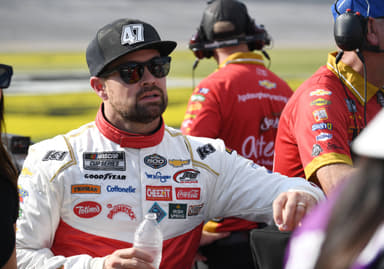In the immediate wake of his defeat to Denny Hamlin in Dover on Sunday, Kyle Larson called for NASCAR to get rid of the Next Gen car’s rear view camera. His reasoning was that the device aided in blocking air and made it extremely difficult to make passes. Not surprisingly, Larson trailed Hamlin for the race’s last 72 laps and came up 0.256 seconds short of him when crossing the checkered flag.
Advertisement
He told the press, “This racing… It’s really hard to pass the lead car. With this car, it’s so easy to aero-block. Honestly, if they took the cameras out of the car, that’s probably one of the little things that could fix it.” The contention was that the camera allowed leaders to look directly behind them and block the air rather easily.
This issue isn’t exclusive to Larson. Many drivers have demanded aero changes, horsepower increase and tire modifications to enable better passing on short tracks. But are tools like the rear-view camera a hindrance? Denny Hamlin doesn’t think so.
In his post-race interview, the Joe Gibbs Racing star was confronted with the opinion of Larson. He responded that he did not rely on the rear view camera much in Dover and chose to trust in his spotter instead. His reason was that things happen very quickly in tracks like the Monster Mile and taking eyes off the road could result in unsavory incidents.
With the same thought in hindsight, he concluded that removing the rear view cameras wouldn’t mean much because the spotters were just going to tell drivers where to drive and how to defend. “I’d rather fix the car or tire or something,” he said.
Kyle Larson’s failed attempt at trying to get past Denny Hamlin in Dover
Larson had won the race’s Stage 2 over teammate Alex Bowman, but Hamlin came in hard at the pit road and got the better of the Hendrick star to take the lead. Larson noted, “I knew I was going to fight an uphill battle once I lost the lead there. I knew I was going to time out to get close to him or hoped anyway.”
He continued, “ But I figured I would time out to get close to him there in the final 20 and that’s kind of what happened. I started moving around and I knew once I got within three, he was just going to start moving around and shut my air off. So, it’s just really easy to do it.” Whether Larson’s solution will find traction in NASCAR’s HQ is yet to be seen. It sure adds a new branch to the controversy surrounding short track races though.








